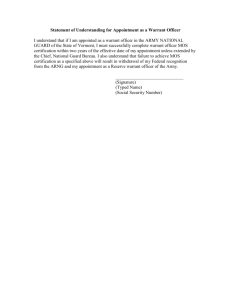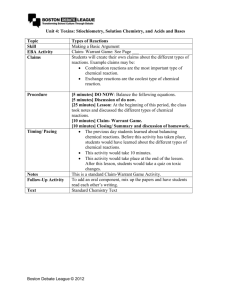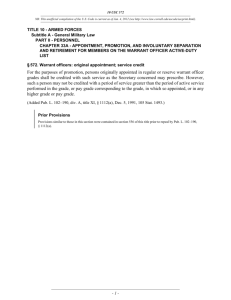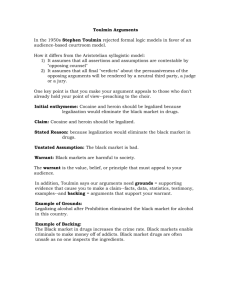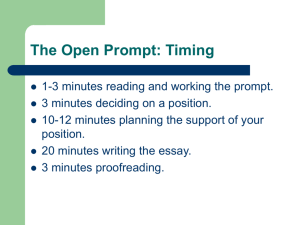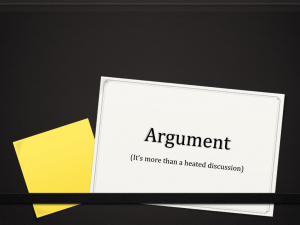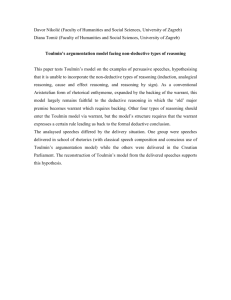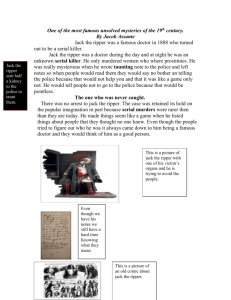TOULMIN LOGIC
advertisement
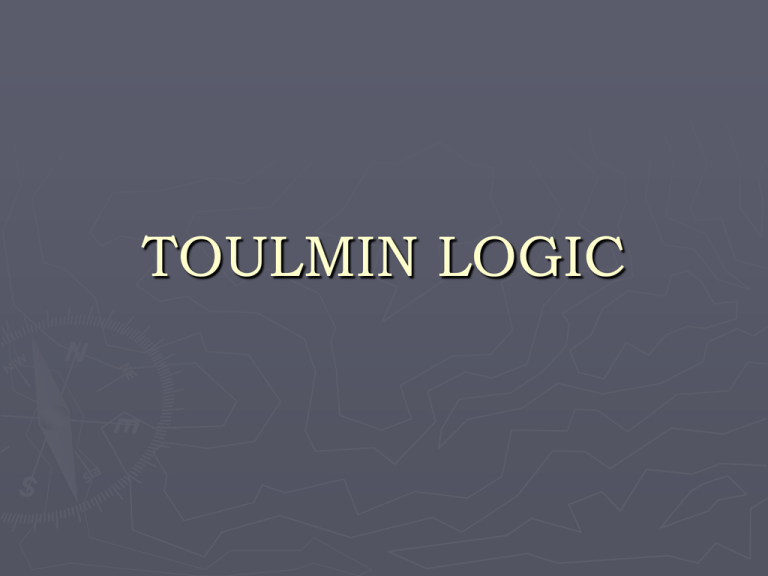
TOULMIN LOGIC ► ► Credited to historian & philosopher Stephen Toulmin, Toulmin logic is a generally accepted standard for the logical, objective examination of claims made by scientists. Toulmin logic bolsters the Scientific Method and demands that the individual asserting a claim be honest and objective. 4 factors in toulmin logic ►Claim ►Data ►Warrant ►Backing ► You already know that to make an argument, you need at least two things: a thesis or claim and evidence or data to support the claim. ► But, as we just discussed, facts (data) don't speak for themselves. ► Say we have the following datum: ► Many people who have been hypnotized recall alien abduction scenarios. ► And we want to use this datum to support the following claim: ► Alien abduction is a real phenomenon. ► What else do we need? What’s missing? ► What's missing is what we call the warrant, the connection between data and claim, the thing that speaks for the facts. ► In this example, the warrant is: ► Hypnosis is a valid means of recovering suppressed memories. ► The WARRANT connects claim and data. ► an “inferential leap” between these two. ► performs a "linking" function by establishing a mental connection between the data and the claim ► CLAIM: ► Aka “thesis,” “your point,” etc. ► DATA: ► Can use any number of different types of evidence; exactly what evidence is accepted depends on rhetorical situation. ► If you present the datum “He really loves kids” to support the claim, “Bill is going to be a really good teacher,” what is your warrant? ► If you claim that “Debbie is a liar,” and your evidence/data is, “Debbie’s told us ten things about the Johnson Contract and all ten have turned out to be untrue,” the warrant is __________________. OK, so why is this important? ► Because a lot of the time, the warrant is ► 1) not revealed, only assumed; and ► 2) not necessarily true. To determine whether a warrant is true or not, we examine the evidence for it. Toulmin called this evidence BACKING. ► WARRANTS can be very difficult to detect, because they are often based on very common patterns of reasoning or very common values. But Because They’re Hard to Detect -► -- It’s especially important to find them. ► Very often, when someone is trying to put a fast one by you, they’re doing it through the warrant. Or when people think sloppily, they’re using an invalid warrant. ► Very often, the best way to critique an argument is through its warrants. Cornwell’s Portrait of a Killer: Jack the Ripper -- Case Closed Cornwell’s central claim is that Jack the Ripper was really Walter Richard Sickert, a relatively wellknown English painter of the late 19th Century. Claim: Sickert was Jack the Ripper. ► DATUM: One of the letters that purported to be from Jack the Ripper was written on the same brand of stationery as a letter from Sickert. ► WARRANT: ___________________ Claim: Sickert was Jack the Ripper. ► DATA: Sickert had an operation as a child that left him unable to have a normal sex life. We know today that many serial killers are impotent. ► WARRANT: ___________________ Claim: Sickert was Jack the Ripper. ► DATA: Sickert painted a picture in 1908 called "Jack the Ripper’s Bedroom," described by an art historian as being "very dark and disturbing." Sickert often painted scenes of violence against women. ► WARRANT: ___________________
